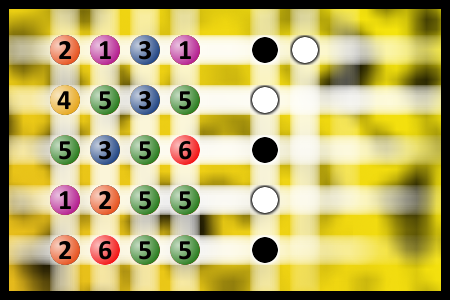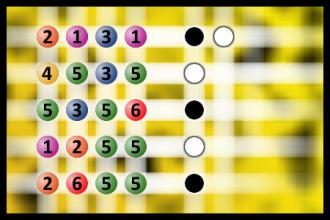Which is a winning combination of digits?
The computer chose a secret code (sequence of 4 digits from 1 to 6). Your goal is to find that code. Black circles indicate the number of hits on the right spot. White circles indicate the number of hits on the wrong spot.Correct answers: 57
The first user who solved this task is Sanja Šabović.
#brainteasers #mastermind

A blind man enters a Ladies Ba...
A blind man enters a Ladies Bar by mistake. He finds his way to a bar stool and orders a drink. After sitting there for a while, he yells to the bartender, "Hey, you wanna hear a blonde joke?"
The bar immediately falls absolutely quiet.
In a very deep, husky voice, the woman next to him says, "Before you tell that joke, sir, you should know five things:
1 - The bartender is a blonde girl.
2 - The bouncer is a blonde gal.
3 - I'm a 6-foot tall, 200-pound blonde woman with a black belt in karate.
4 - The woman sitting next to me is blonde and is a professional weight lifter.
5 - The lady to your right is a blonde and is a professional wrestler.
Now think about it seriously, Mister. Do you still wanna tell that joke?"
The blind man thinks for a second, shakes his head, and declares, "Nah, not if I'm gonna have to explain it five times."
The bar immediately falls absolutely quiet.
In a very deep, husky voice, the woman next to him says, "Before you tell that joke, sir, you should know five things:
1 - The bartender is a blonde girl.
2 - The bouncer is a blonde gal.
3 - I'm a 6-foot tall, 200-pound blonde woman with a black belt in karate.
4 - The woman sitting next to me is blonde and is a professional weight lifter.
5 - The lady to your right is a blonde and is a professional wrestler.
Now think about it seriously, Mister. Do you still wanna tell that joke?"
The blind man thinks for a second, shakes his head, and declares, "Nah, not if I'm gonna have to explain it five times."

